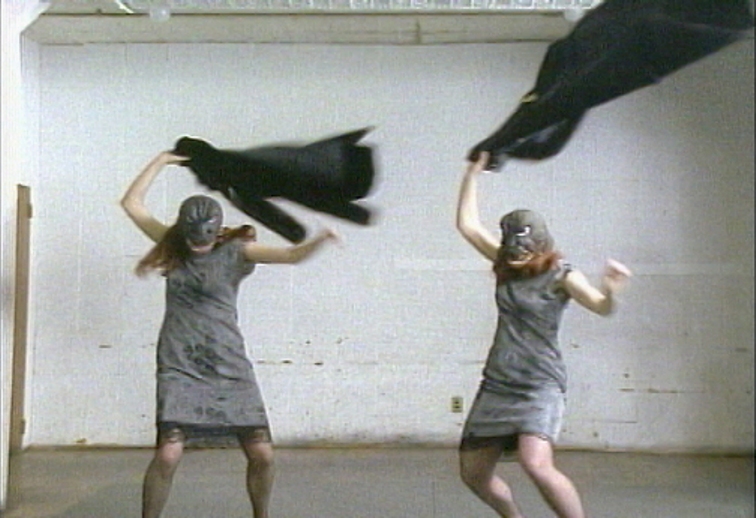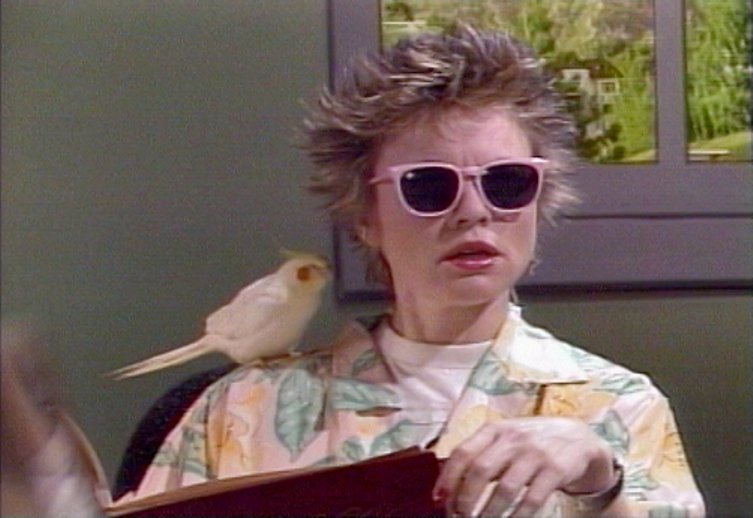In the mid-1980s, television became a new frontier for independent and experimental video artists. In a unique collaboration between Walker Art Center and Twin Cities Public Television (KTCA), Alive From Off Center was born. This ground-breaking series first aired on PBS in the summer of 1984 and featured an assortment of performances ranging in discipline from dance to theater to comedy. Though the series was not quite a variety show, the producers brought in different artists every week to create and execute their own episode. To tie Alive From Off Center together, Susan Stamberg—a journalist who was the first woman to anchor a nightly news program— and later renowned musician and performance artist Laurie Anderson, hosted the show.
Over the last six months, the Walker has featured eleven episodes spanning the first three seasons of the series. The episodes are available for viewing on the Best Buy Video Bay through February 7, 2015. In the summer of 2013, Film/Video intern Anna Swanson sat down with two former executive producers, Melinda Ward (the first producer of Alive From Off Center) and John Schott, to discuss the series’ conception and legacy.
As Ward and Schott both noted, the 1980s were a golden age in television. Network giants like MTV and ESPN first gained their footing at the start of the decade and reached hundreds of thousands of Americans every day. According to Schott, offbeat, avant-garde shows like Alive From Off Center were also “right there at the moment that this larger cultural change was taking place, across a wide range of mediums.” For the first time, less well-known artists not only had new opportunities to work in video, but “a big new awareness of a mass audience.” Alive From Off Center offered a unique platform that tapped into PBS’s pre-existing viewers while still pushing the boundaries of network television.
The show first got its name as a riff on “Live from Lincoln Center,” the PBS series that broadcasts live music, theater, and dance performances. Alive was its alter-ego that featured experimental episodes from artists like director Jonathan Demme, storyteller Spalding Gray, photographer William Wegman, and dancer and choreographer Trisha Brown. Schott believes Alive came to fruition at an important cultural moment, when “a lot of people came forward who were kind of rooting for PBS to do something unusual.” Though Alive From Off Center never reached mainstream audiences, Schott asserts that “there was kind of a secret audience out there…for whom that show was something really amazing and important to them.”
In the first two seasons of Alive, funding was limited so about half of the episodes were produced by KCTA-TV in the Twin Cities and the other half were preexisting segments that Ward acquired. But after three seasons and a grant from the Ford Foundation, the series was able to produce nearly 70% of the episodes at KCTA. The series was funded entirely through public organizations: National Endowment for the Arts, Rockefeller Foundation, and Ford Foundation made up the majority of the contributions. The structure of the show varied from episode to episode: some included multiple short pieces by a variety of artists while others featured the work of only one person.
As both producers noted, Alive From Off Center pioneered an era of video art in the 1980s. Ward suggests that artists were attracted to the series due to “love of television, as television” because “suddenly anybody could do it for not very much money, and you didn’t have to worry [about cost]…with video you just play.” The show brought integrity and excitement to the medium (the New York Times gave it rave reviews). According to Ward, Alive “validated this idea that you could work seriously in television in some way, or television as a medium, as an art form.”
Alive From Off Center will screen at the Walker through February 7, 2015. Be sure to swing by the Best Buy Video Bay to view this innovative television programming.

